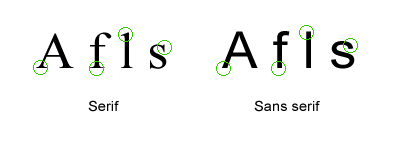Design for reading based on scientific research
How people read is one of the most important theses in design. There are a lot of arguments about computer vs. paper, serif vs. sans serif, and single-wide column vs. multiple columns. Today, I introduce scientific researches for that.
Computer vs. Paper
I always use Kindle because I can read books whenever I want. Then, computer and paper, which tool is better for understanding? Unfortunately, Kindle readers are significantly worse than paperback readers at recalling.
Anne Mangen (2013) gave 50 readers the same short story. Half read it on a Kindle, and half in a paperback. The performance of the test about the objects, characters and settings was almost similar, except for one thing. When she asked them to place 14 events in the correct order, the Kindle readers performed significantly worse. She said as follows:
When you read on paper you can sense with your fingers a pile of pages on the left growing, and shrinking on the right … Perhaps this somehow aids the reader, providing more fixity and solidity to the reader’s sense of unfolding and progress of the text, and hence the story.
Serif vs. Sans serif
As you know, there are two major typefaces. A serif is a stroke in a letter that conveys an impression of classical and traditional. A sans serif means “without serif” and it has simple and casual image. Which one is more readable?

There is no difference in comprehension. The legibility of them have been studied over a century such as research by Tinker (1932) and this is a fact. You should focus on font size, space, and color rather than typefaces regarding readability.
Single-wide column vs. Multiple columns
In web design, we can set columns and line length freely and wonder which layout is the best. Mary Dyson (2005) found that we could read a single wide column faster than multiple columns. In addition, the optimal length for on-screen reading speed was 100 characters per line.
However, our preferences are different. Many people like multiple columns and 45 to 72 characters per line. You need to consider both reading speed and user’s preference.
